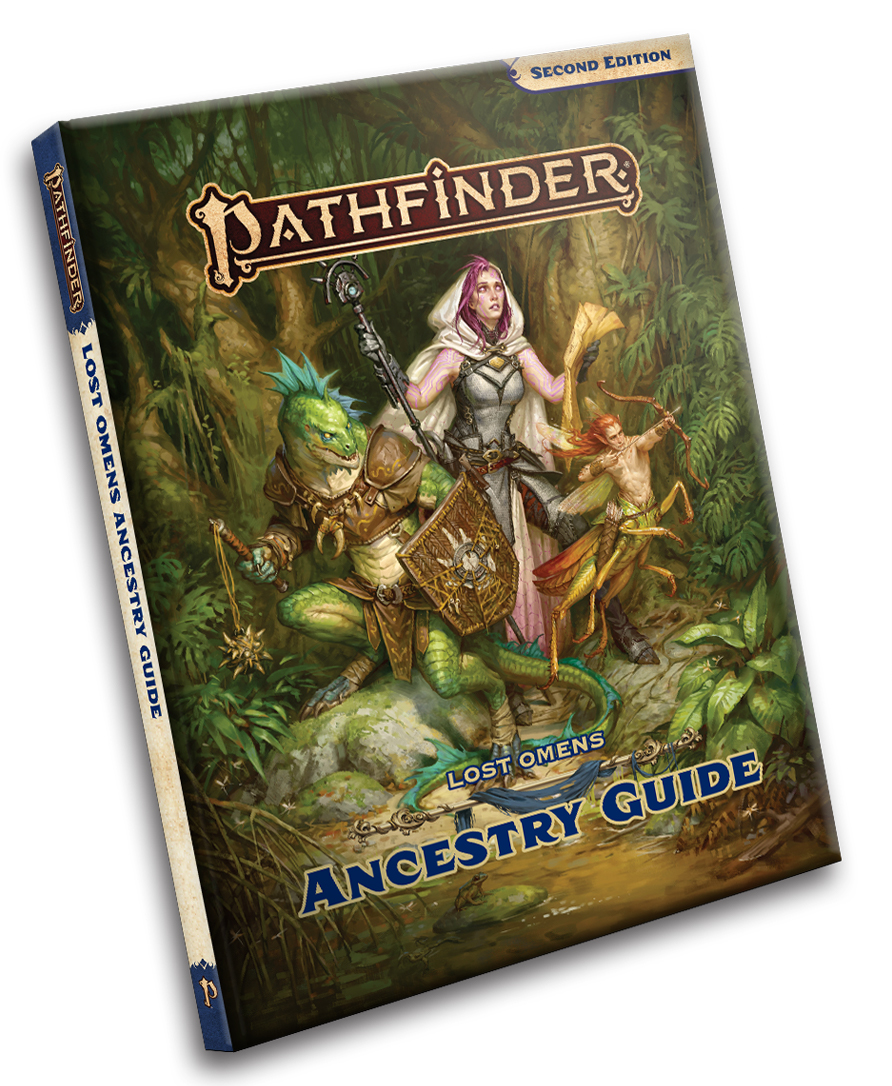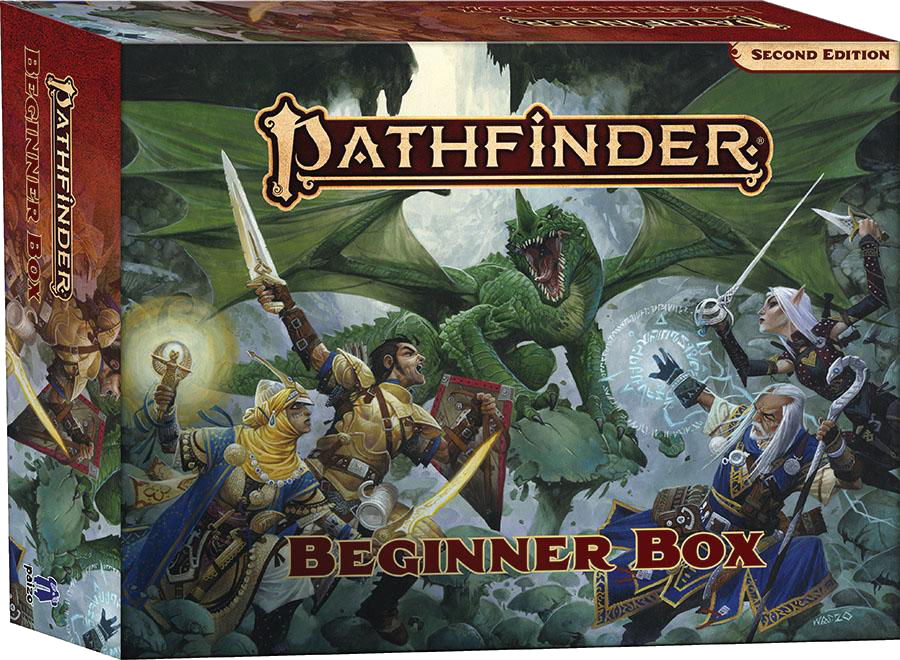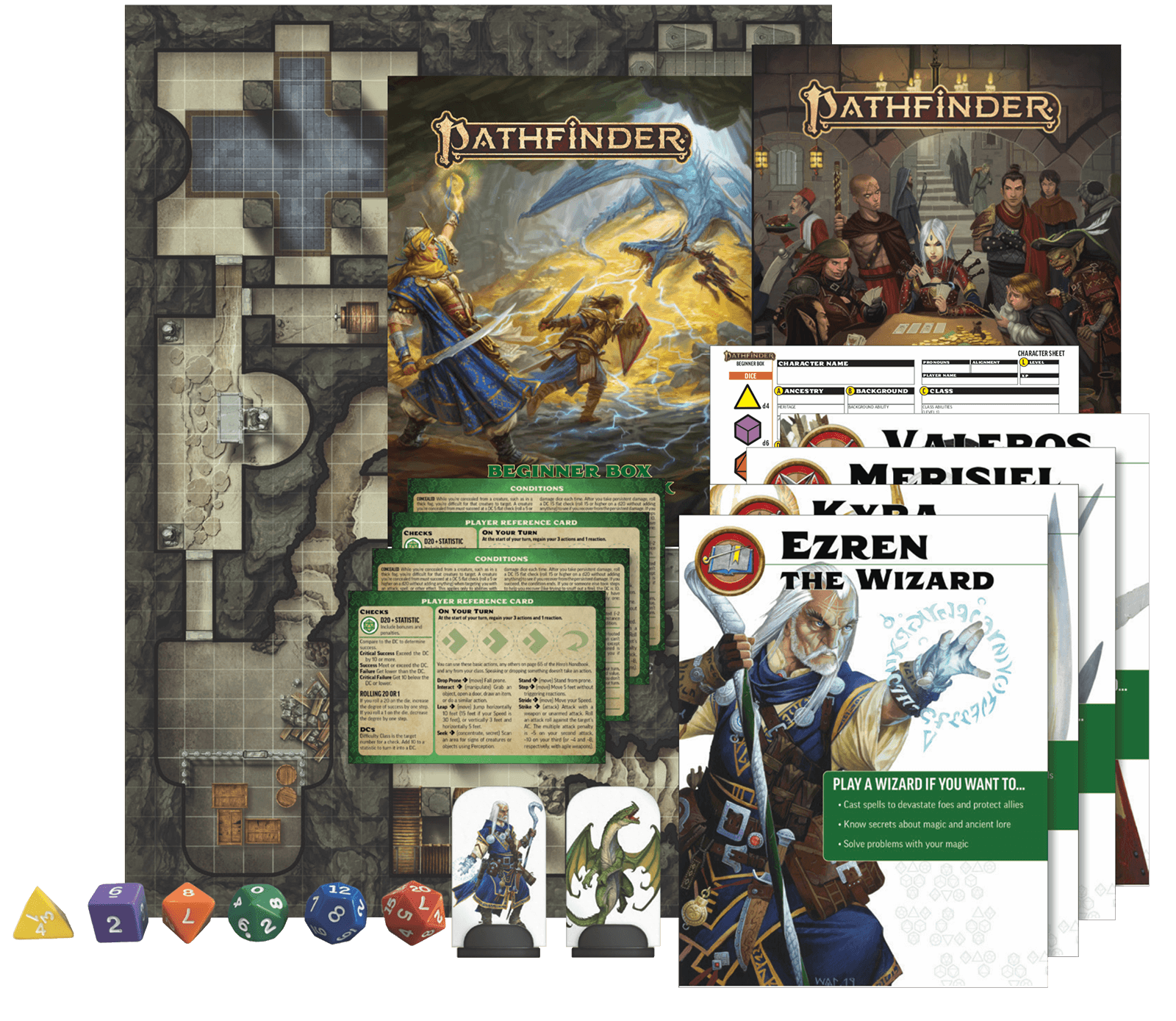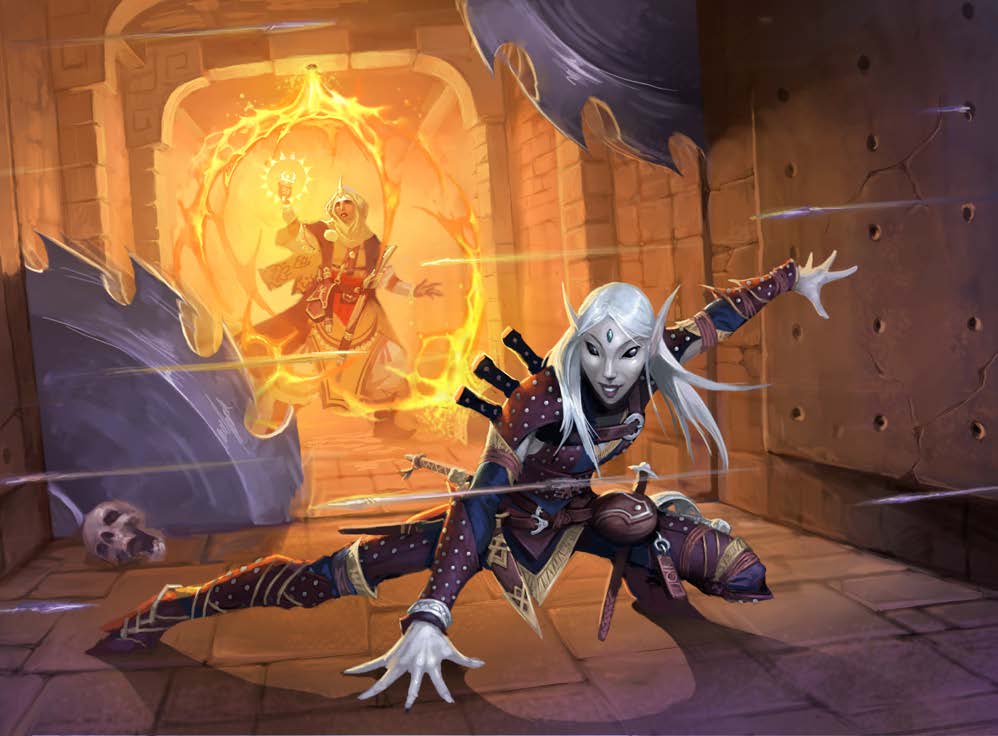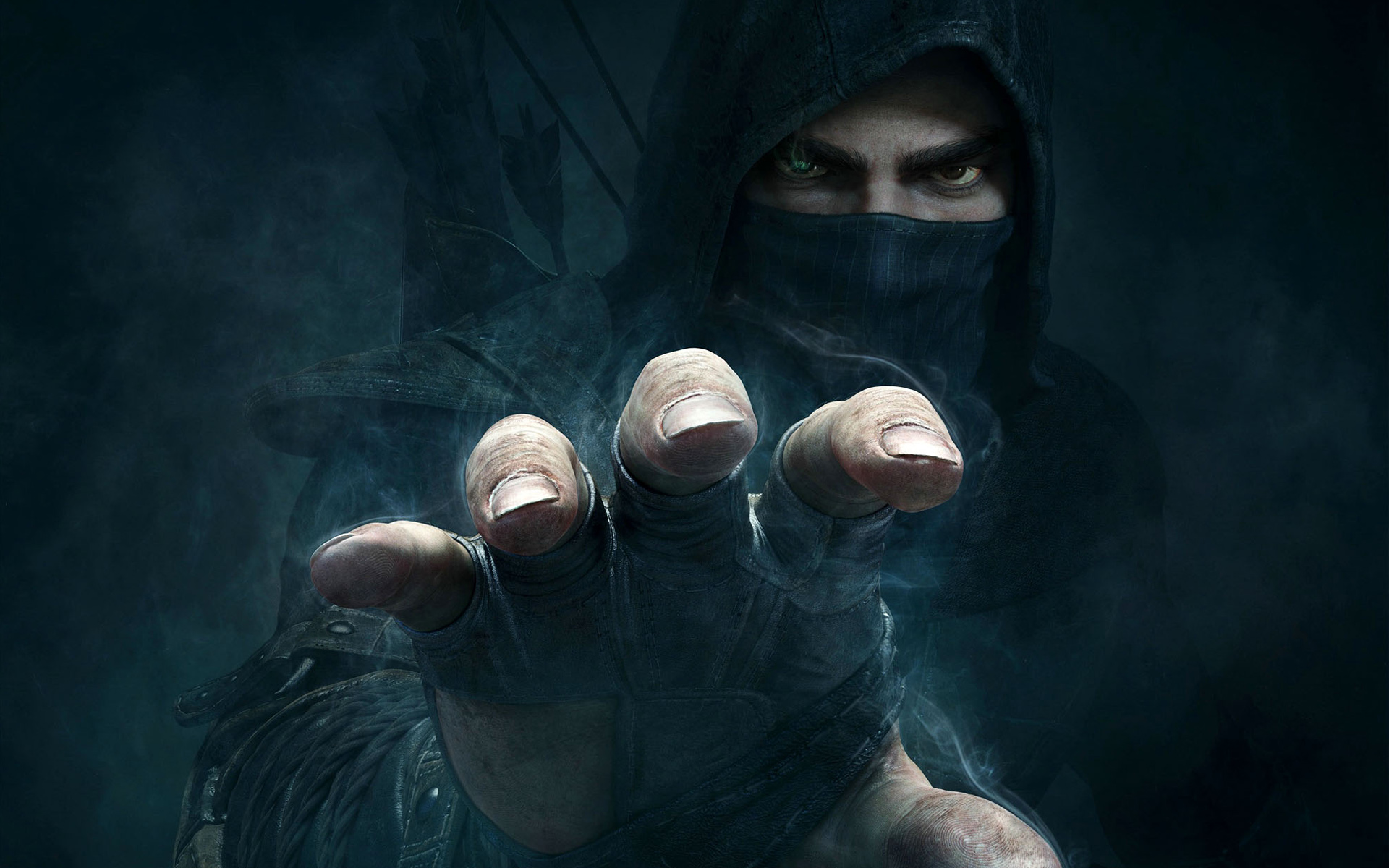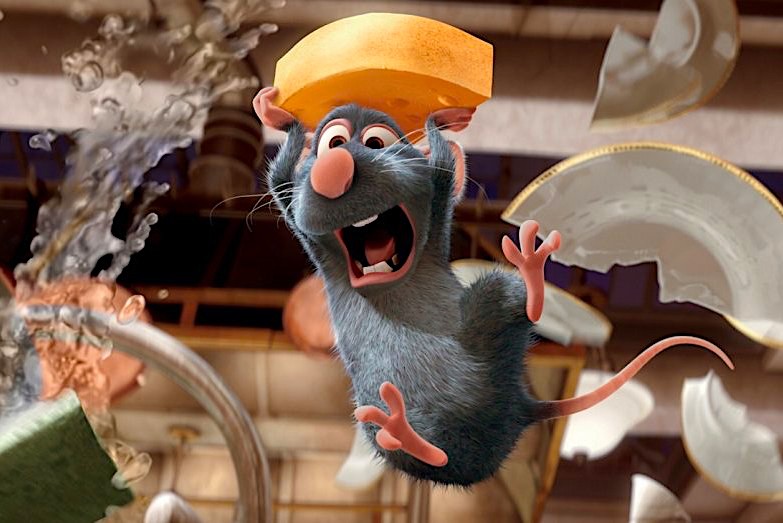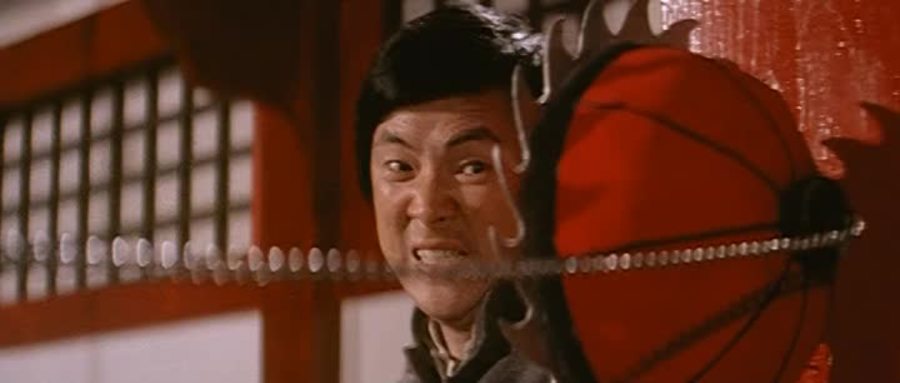Make sure to read Jason’s review of the Pathfinder Second Edition Core Rulebook, as well as his review of the Pathfinder Advanced Player’s Guide, Pathfinder Lost Omens: Legends, Pathfinder World Guide, Character Guide, Gods & Magic, Gamemastery Guide, and Bestiary 2.
If you enjoyed this review make sure to check out our Pathfinder Adventure Path: Agents of Edgewatch Podcast and our Pathfinder Adventure Path: Three Ring Adventure.
I’ll start this review with a personal confession: I am an alt-aholic.
Yes, I leveled one of every class to max level in World of Warcraft. I may have even done so for Alliance and Horde.
Yes, I have an entire SuperFriends-level roster of standard character builds I make in pretty much every game system I encounter. If you run across a (usually-human) mage named “Jerryx” or a dwarf named “Gryzba” in any random system, even money says it’s me. Full disclosure: Gryz has been known to be a fighter or a paladin, depending on my mood.
So when it came time to sit down with the Lost Omens Ancestry Guide, it’s really kind of a slam dunk: the question isn’t whether I’ll like it, but how much I’ll like it, and which things I’ll turn into character concepts first. Because this is one of Paizo’s most straightforward supplements in that it’s just new ancestry and heritage options to use when building characters. Cover to cover.
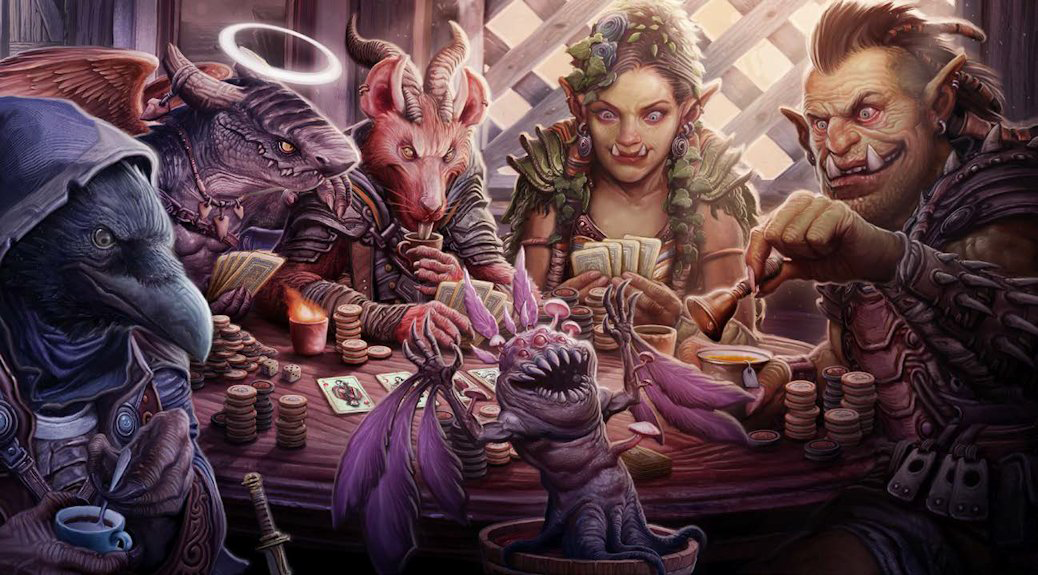
First, let’s do a brief rules primer on the difference between “ancestry” and “heritage”, just in case you’ve stumbled onto this review while missing some of the intervening books. An ancestry is a core group of people; a heritage represents more of a subtype of people. In the Core Rulebook, most heritages were fairly minor flavor tweaks – to pick an example, a cavern elf would get darkvision while a woodland elf could climb (trees) faster. The one interesting exception was that half-elves and half-orcs were considered human heritages rather than full ancestries, and could take ancestry feats from either of their core ancestries. (Although when Second Edition first came out, the “orc” ancestry wasn’t yet a separate entity.)
It turns out the half-elf and half-orc were a sneak preview of bigger, better things to come for heritages. Paizo expanded on them in later rulebooks with the concept of the “versatile heritage”. Versatile heritages were much more well-defined variants that offered almost as many choices as full ancestries and weren’t restricted to a particular ancestry the way half-elves and half-orcs were. At the risk of oversimplifying, a versatile heritage was a way of representing “half-X” where the other half of the X could be ANYTHING, not just human. So to use a real example from our Edgewatch campaign, Chris Beemer plays an orc (ancestry) tiefling (demonic heritage).
Crossing genres, another way to look at it would be the difference between Data and the Borg. On the surface, they both represent people with technological components, right? Data (or more generically, a “Soong-type android”) would represent an ancestry. He was designed from the ground up as a synthetic lifeform; it’s what he is. The Borg, on the other hand, would be more like a heritage. Borg come from a lot of different underlying species, but the Borgification process adds the common technological elements that make them a people. But under the hood, you could have a Klingon Borg or a Romulan Borg.
So that’s ancestries and heritages in a nutshell. I wanted to make sure everyone has the terminology down before we continue. Now let’s take a look at the Lost Omens Ancestry Guide in more detail.
At a high level, the book has two major sections that are about the same size. The first section presents expanded choices for the ancestries and heritages that have already been added since the Core Rulebook: primarily the Advanced Players’ Guide, but there are other sources as well. The second half of the book presents 14 new ancestries and heritages that are completely new to Second Edition. There’s also a VERY small section of ancestral gear, but it’s literally just two pages.
Now…. I’m going to cheat a little and go out of order and do the new stuff first. Why? Because new stuff is more fun, of course! And there’s generally more to say about them. That’s not to say that it’s not fun to speculate about duck-based tengus, which are now A Thing, but let’s embrace the new, shall we? Within that, I’ll probably talk about ancestries first and heritages second, so we’re staying in general areas.
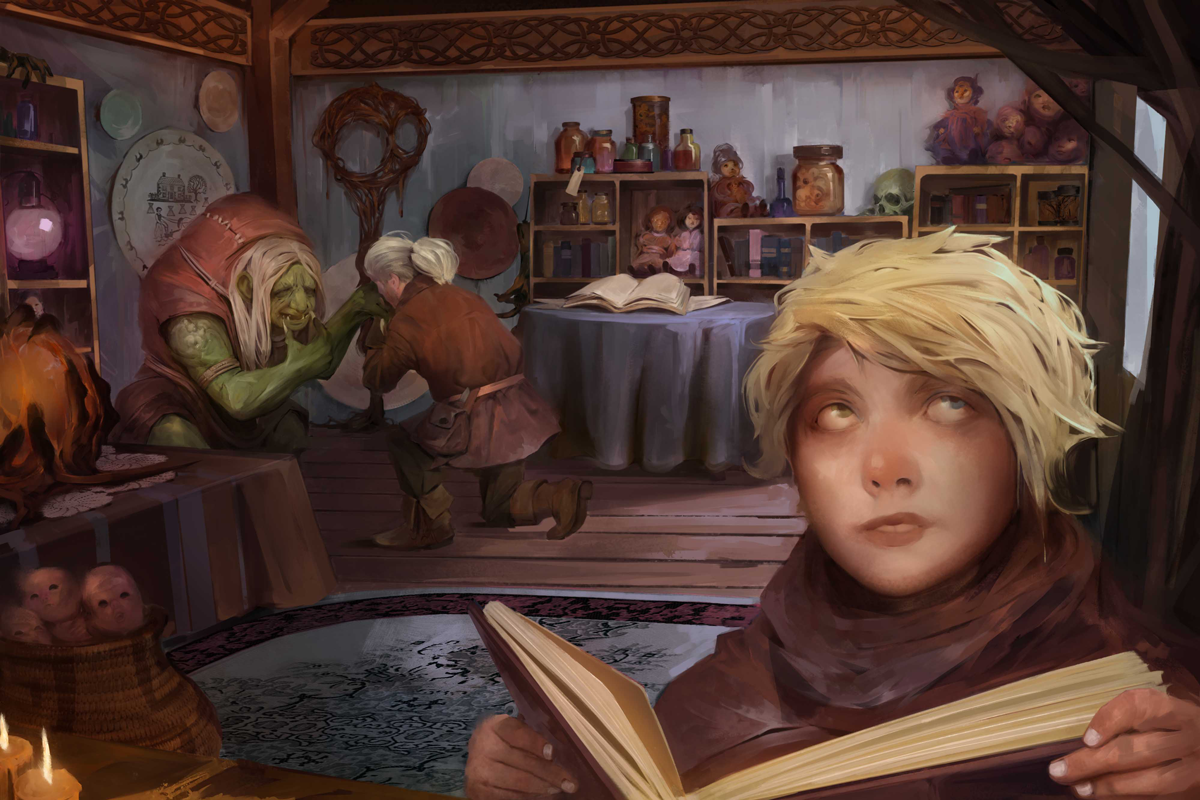
We have six new ancestries to unpack here:
First, we have Androids, which are half-organic, half-machine beings introduced to Golarion by the crash of a starship back in the First Edition timeline. As a physical “look” thing, they tend to have circuitry patterns on their skin that resemble tattoos. They tend to be fairly flexible people, as their technological components can confer various physical or mental benefits. Most have a reduced understanding of humanoid emotions, which is reflected by Charisma being their flaw stat. (Also, I’ll say it… if you’ve been playing any Starfinder, you’ll see some similarities to the Starfinder Android here.)
Fetchlings are creatures from the Shadow Plane whose feats revolve around manipulating shadows. To pick a few sample feats, Clever Shadow lets you interact with objects using your shadow (like opening a door) while Hefting Shadow lets you store up to 2 bulk of gear in your shadow as if it were a container. Also… their look is about as goth as it gets.
Fleshwarps are the result of magical mutation and are probably the most unusual ancestry in the book. The specific origin can be anything from a magical accident to deliberate torture (the drow are reportedly fond of turning captured enemies into fleshwarps), but the general theme is “magic does weird crap to your body”. The feats tend to be a grab bag of limb alterations and augmentation of senses. And yes, at higher levels, tentacles are in play.
Kitsune are shapechanging fox-people who tend to have two forms: a fox form and a humanoid form. They can be in either form indefinitely, but the fox form counts as their true form and the humanoid form is considered a disguise in social situations. Kitsune feats tend to revolve around animal attacks, limited magical abilities, or an emphasis on disguises (using their own AND seeing through others’) and navigating social situations.
Sprites give us something we’ve never had in Second Edition. A TINY character ancestry. That’s right, your gear scales down, and you use the combat rules for Tiny creatures, which means your weapons have zero reach and you have to enter the same square as an enemy to attack them. And needless to say, Strength is ABSOLUTELY your flaw stat. On the bright side, you can use your fellow PCs as a mount, or – in the statement that will launch a thousand pieces of adorable fan-art – take a feat to ride a corgi mount. (Technically, you can take the Pixie heritage and remain Small-sized, but why on earth would you spoil the moment like that? DID I NOT MENTION THE BATTLE CORGI?)
And lastly, we have the Strix. I tend to think of them as the inverse of tengu… tengu are avian humanoids who are mostly bird; strix are avian humanoids who are mostly human, though they tend to have bird-claw feet and wings. A lot of their feats tend to revolve around using their wings more effectively; they start using their wings to leap more effectively but can add attacks and other status effects, and eventually gain full flight.
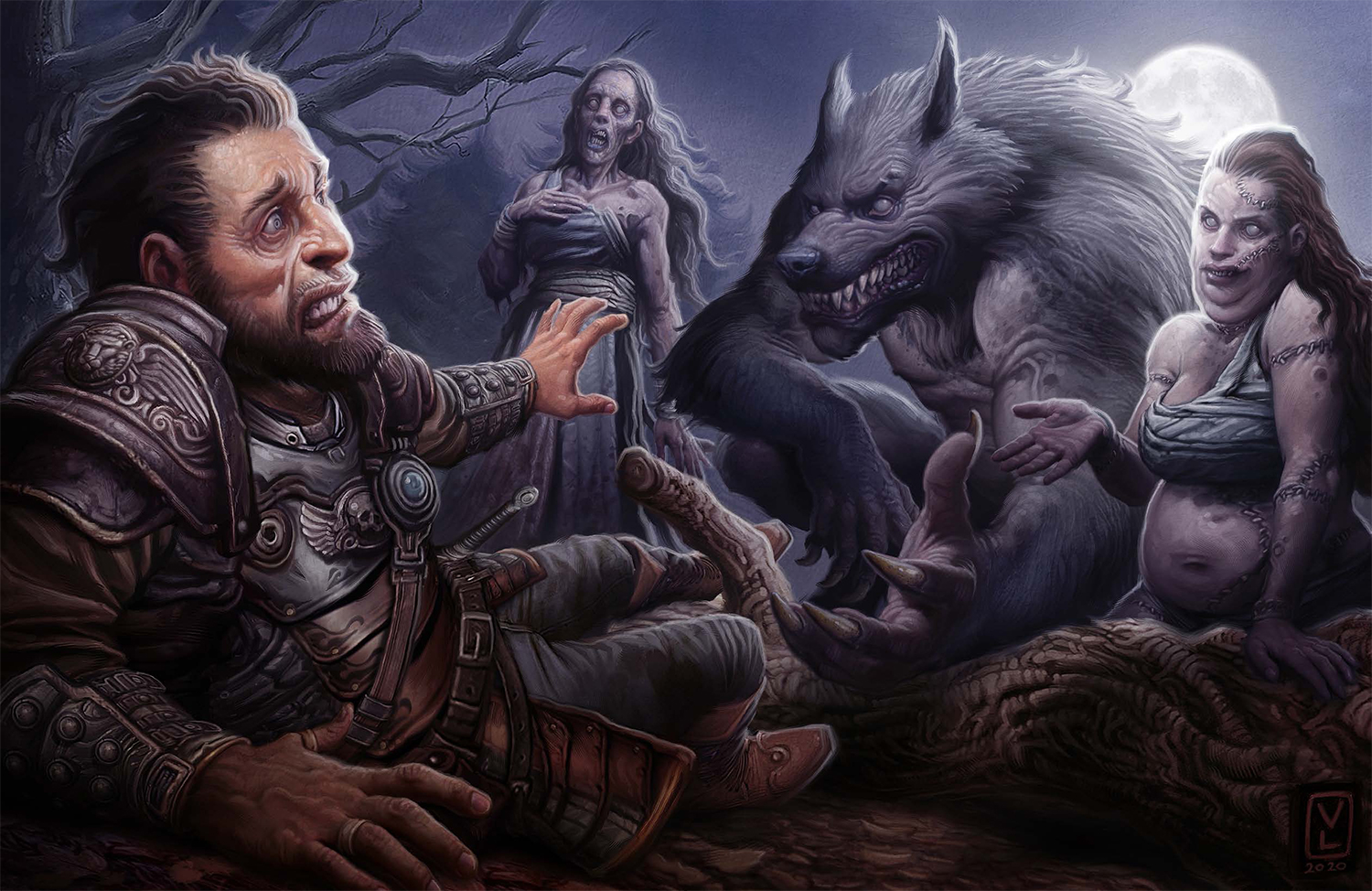
On the heritage side, there are basically eight, but five of them are the geniekin, which share a lot of common elements (pun semi-intended).
The aphorite (law) and ganzi (chaos) are entities of law and chaos the same way aasimars and tieflings represent good and evil. Aphorites have a metallic complexion, and a lot of their feats increase skills or make combat more effective by “understanding the workings of the universe”. Ganzi go the opposite direction and emphasize their uniqueness… many have distinct coloration patterns or feathers, some even have tails or vestigial wings. One of the interesting features of a ganzi is energy resistance which is determined randomly at the start of each day, so one day it might be fire and the next day it might be acid.
The beastkin are humanoids who had a werecreature somewhere in their family tree, so they have a mix of their original ancestry and beast traits. They usually have a “normal” humanoid form and a hybrid form that is still humanoid but the beast features become more prominent. The really interesting thing here is the choice of “inherent animal” (i.e. the animal you’re crossed with) is pretty much up to the player – the rules recommend six or seven forms, but they’re just examples. So if you want your inherent animal to be a poodle or a giant ant or a panda… it’s all good. (Also, it dawns on me that since this is a heritage, you could apply it over top of a catfolk or tengu, so you could have an animal that turns into a different animal. It’s a furry’s paradise!)
Now we get to the geniekin, which are humanoids with some sort of elemental ancestry. We have the Ifrit (fire), Oread (earth), Slyph (air), and Undine (water), and then there’s the Suli, a geniekin that has a mix of all four elements (which I’m dubbing the “Quad-Core Geniekin”). There are a few common feats available to all geniekin (darkvision, familiarity with geniekin weapons, a tail), and then each “flavor” of geniekin has specific feats that tie into their source element. Well, most of them do. The Suli, by being a mix of all four, get powers that are less about raw power and more about flexibility. For example, “Elemental Bulwark”… it’s “only” DR5 protection, but it can be ANY of the four primary elements and can be declared when the attack is made. An Ifrit might get a more powerful equivalent ability, but it’s ONLY good for fire.
I’ve tended to focus on what sort of cool tricks these new options offer, but I should mention that it’s not all focused on combat. As with previous books, there’s also a fair chunk of world-building for each ancestry or heritage, explaining things like what parts of Golarion they live in, how they structure their societies, their interactions with other various humanoids, and things like that. I know I get lost in “look at the cool toys” mode at times, but I did want to acknowledge and appreciate the level of detail that Paizo puts into making these various new people part of the larger world.
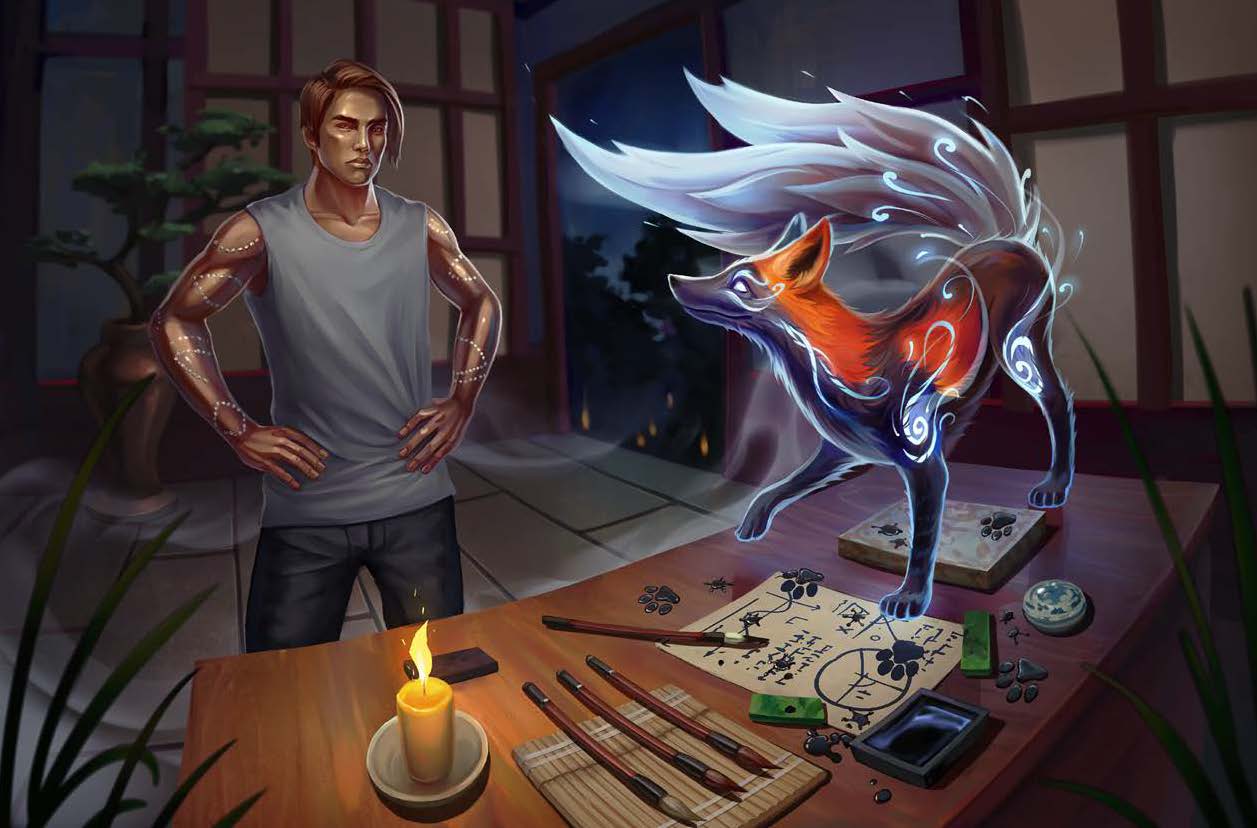
On the pre-existing side, I’ll probably not dive as deep, but just give some of the highlights. On the ancestry side, we get new options for the azerketi, catfolk, hobgoblin, kobold, leshy, lizardfolk, orc, ratfolk, and tengu. On the heritage side, it covers the aasimar, changeling, dhampir, duskwalker, and tiefling.
Now there’s one oddball here. I’m not looking to kick anyone in the jimmies, but I’d be remiss if I didn’t point out something that could be confusing in the short term. You’ll note that one of the “expanded” ancestries is the azerketi, an aquatic people with ties to the Azlanti empire. They’ve got kind of the full Aquaman feat package – water-based spells, water movement and combat feats, communication with sea beasties… all that good stuff. The problem is, they were supposed to debut in the Absalom, City of Lost Omens sourcebook… which isn’t out yet. So the “good” news is that they feel more like a new ancestry than an “updated” one, BUT as I’m reviewing this, their base information (hit points, bonus and flaw attributes, etc.) doesn’t exist anywhere. We reached out to Paizo, and they will be making that content available on the web, but I wanted to be honest about it in case readers find it confusing. Not a show-stopper, but it’s something you might need to be aware of.
Looking at the updated content, I’m just going to skim a few favorites. Since I’m already playing a tengu, I’m excited about the fact that tengu get a chain of feats that involve creating a magical tengu feather fan out of their own feathers. They can then imbue it with magic consisting of progressively more powerful storm-themed spells. Similarly, orcs gain a similar feat chain built around the concept of a “warmask” that can provide various combat and a few non-combat benefits. But it’s orcs so… let’s be honest… mostly combat. One of my favorites that I want to run out and try is a new leshy heritage… the Fruit Leshy. It’s a leshy that creates some sort of berry or other fruit every day that can be plucked and eaten to serve as a healing potion based on the character’s level. (The fruit only lasts for a day, so no, you can’t store them up.) The dhampir gain an undead companion option (yes… I’m singing “My Little Zombie” to the “My Little Pony” theme song), and as I hinted at earlier, tengu can now be waterfowl-based. (The endgame here inevitably being a Darkwing Duck build. Just Sayin’.) There’s lots of interesting little things here, but I figure you can discover those at your own pace.
As I mentioned, there’s a very short gear section, but it’s mostly just weapons for the new ancestries and heritages contained in this book. They do also have an interesting mechanism for a “resonant” weapon trait. If you have a resonant weapon and can also cast spells or take other actions with elemental typing, you can use a reaction to channel a little bit of that energy into your weapon as bonus damage. From there, there’s also a “Conducting” rune that can take that small bit of damage and make it a full damage die of typed damage. This feels like it’s tailor-made for the quad-core geniekin (the Suli)… give your weapon typed damage, on the fly!… but could be useful to other character builds as well.
In closing, if you’re someone who loves playing around with new characters like I do, you’re going to want to make a Kool-Aid man-sized hole in the wall of your gaming shop grabbing this book. It offers TONS of new character ideas to play around with. I probably started rolling four or five new alts in my head just during the process of writing this review. Obviously, everyone’s got different tastes of what their favorite might be, and maybe there’s even the odd build or two you just don’t care about, but taken as a whole, there’s so much in here that I feel pretty confident saying “there’s something for everyone”. So there it is… the Lost Omens Ancestry Guide. Please Alt Responsibly.

